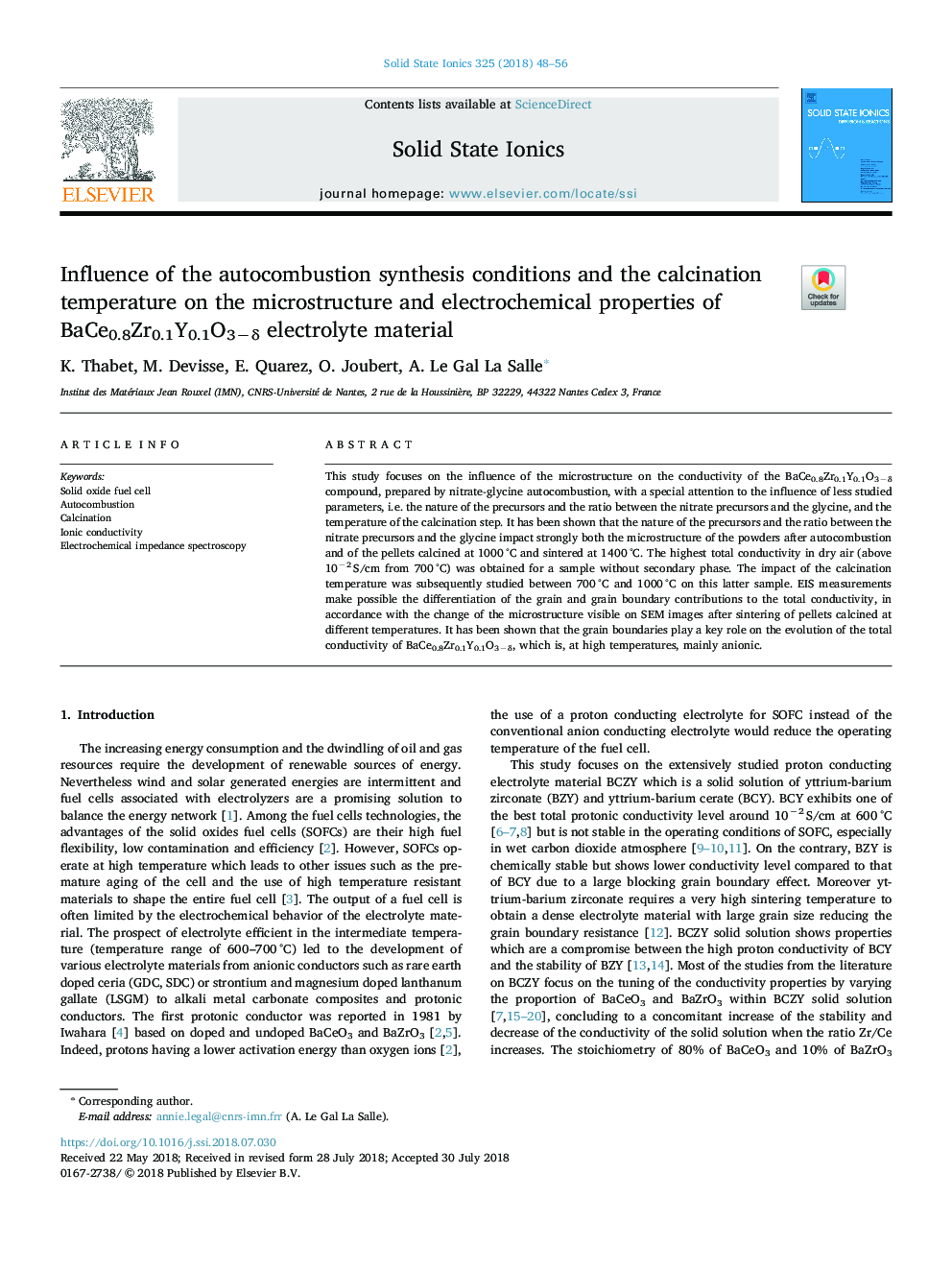| Article ID | Journal | Published Year | Pages | File Type |
|---|---|---|---|---|
| 7744165 | Solid State Ionics | 2018 | 9 Pages |
Abstract
This study focuses on the influence of the microstructure on the conductivity of the BaCe0.8Zr0.1Y0.1O3âδ compound, prepared by nitrate-glycine autocombustion, with a special attention to the influence of less studied parameters, i.e. the nature of the precursors and the ratio between the nitrate precursors and the glycine, and the temperature of the calcination step. It has been shown that the nature of the precursors and the ratio between the nitrate precursors and the glycine impact strongly both the microstructure of the powders after autocombustion and of the pellets calcined at 1000â¯Â°C and sintered at 1400â¯Â°C. The highest total conductivity in dry air (above 10â2â¯S/cm from 700â¯Â°C) was obtained for a sample without secondary phase. The impact of the calcination temperature was subsequently studied between 700â¯Â°C and 1000â¯Â°C on this latter sample. EIS measurements make possible the differentiation of the grain and grain boundary contributions to the total conductivity, in accordance with the change of the microstructure visible on SEM images after sintering of pellets calcined at different temperatures. It has been shown that the grain boundaries play a key role on the evolution of the total conductivity of BaCe0.8Zr0.1Y0.1O3âδ, which is, at high temperatures, mainly anionic.
Keywords
Related Topics
Physical Sciences and Engineering
Chemistry
Electrochemistry
Authors
K. Thabet, M. Devisse, E. Quarez, O. Joubert, A. Le Gal La Salle,
